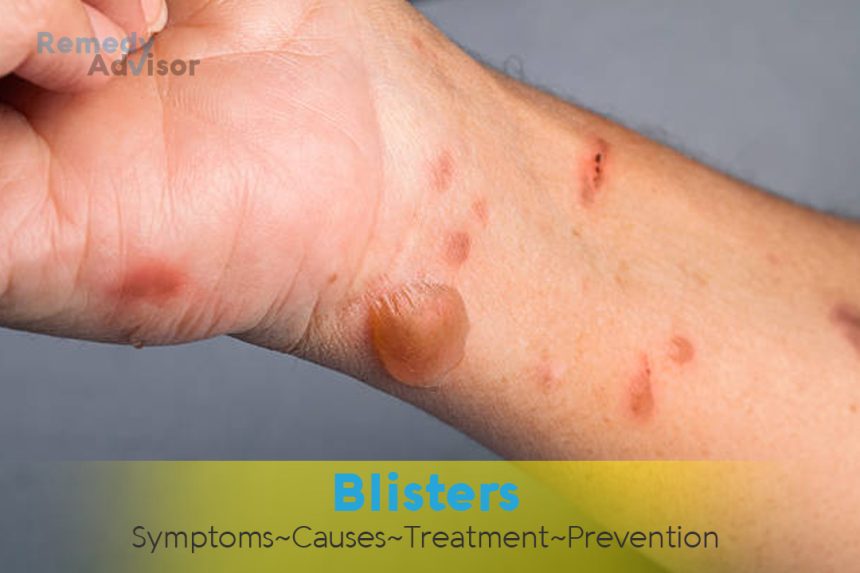What is it
Blisters are raised or loose areas of skin in which fluid accumulates under the outer layer. A blister may not be painful at first, but if the outer layer of skin the epidermis is opened, the sensitive skin underneath can become quite painful and may also get infected.
Symptoms
- Fluid-filled, raised areas on the skin that are often tender to the touch.
What causes it
Blisters have many causes, including bums, cold sores, and allergic reactions to plants or insects. The most common nonmedical cause is friction or pressure from ill-fitting shoes, socks, or stockings either too big or little that rub against skin. Going without socks or stockings in normally ill-fitting shoes can also blister heels and toes, particularly in hot weather, when feet are likely to swell and sweat. Sandals and other shoes with straps are particularly likely to blister bare skin.
What if you do nothing
If it’s a small blister, it will heal by itself if you eliminate the pressure that is causing it. Just make sure it stays clean.
Home remedies
If the blister is less than an inch across, don’t break it open or try to drain it. Not only is the skin underneath extremely sensitive, but it can also become infected. K necessary, take the following steps:
Relieve pressure
If the blister is in a weight bearing spot, cover it with a moleskin pad with a hole cut in the middle.
Relieve pain
If you have a large blister that hurts when you walk on it, you may want to puncture it. First wash it, then make a small hole near its edge with a sterile needle (hold it in a flame for a few seconds). Then gently squeeze out the liquid and cover it with a tight sterile bandage; try to keep it dry.
Cleanse and protect
If the blister breaks, wash it with soap and water, and protect it with a light bandage.
Prevention
Buy shoes that fit
This is your first line of defense.
Keep your feet dry
Cotton or woolen socks are better at absorbing moisture than nylon, and some synthetic fabrics are also designed to wick away moisture. Foot powders also help absorb excess moisture.
Protect blister-prone areas
Use foot powder, breathable adhesive tape (sometimes labeled “first aid”), moleskin, or petroleum jelly to reduce pressure and friction. If you typically develop blisters on your hands after using tools or sports equipment, don’t forget to put on gloves before beginning your activity.







